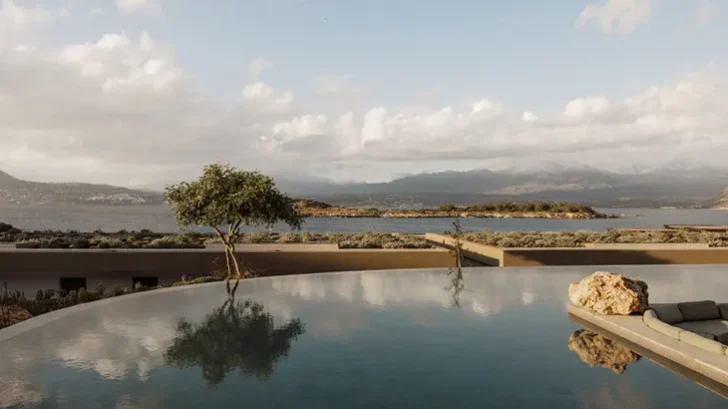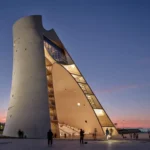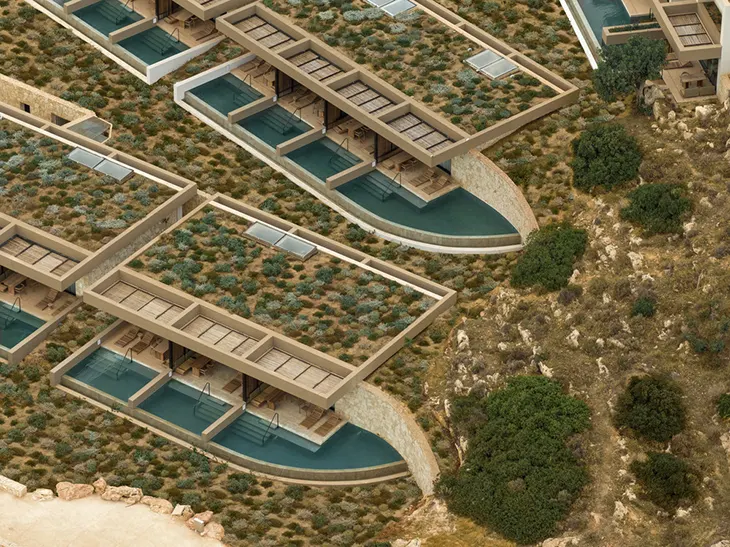
Set on the rugged hillside of Akra Pelegri in Chania, the new JW Marriott resort by Athens-based studio Block722 redefines hospitality on the island of Crete. This five-star retreat, spread across nearly 60,000 square meters, is more than a luxury destination, it is a sensitive architectural response to the land, climate, and culture of one of the Mediterranean’s most storied landscapes.
HOTELS
From arrival, the design emphasizes gradual immersion. Visitors enter through a planted forecourt where the view of Souda Bay is deliberately withheld, then slowly revealed as they move through the architecture. This choreography of movement and discovery is central to Block722’s vision: a hospitality experience rooted in place, rhythm, and elemental connection.
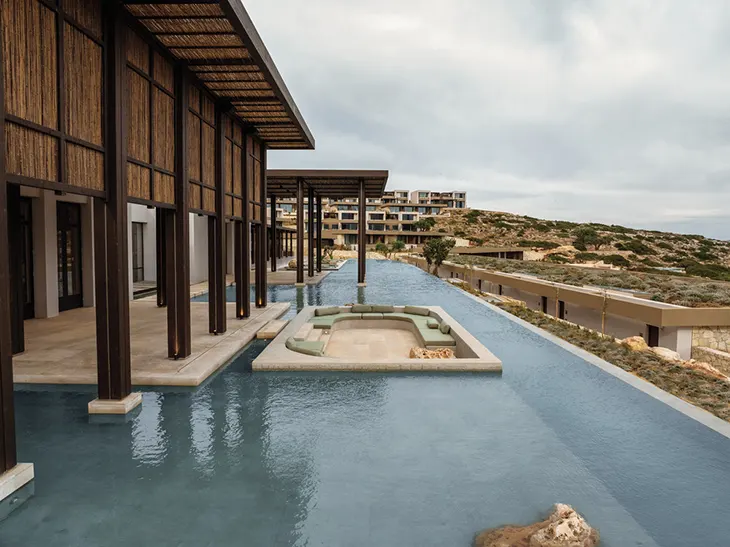
The reception area, garden, restaurant, and communal spaces are defined by clean geometries and framed vistas. Natural light filters through skylights and pergolas, which evoke the proportions of Doric columns while using raw materials like wood and local stone. These interventions act as filters, softening light and inviting the outdoors inward. The use of uncut boulders and sunken lounge islands surrounded by water reinforces a tactile, sensory connection to the Cretan landscape.
Rooms and suites are scattered amphitheatrically along the slope, designed to disappear into the terrain. Composed of one- and two-level volumes, the accommodations offer uninterrupted sea views while maintaining privacy and scale. Rooftop planting, shaded terraces, and private pools are integrated not as amenities, but as spatial devices that regulate climate and enhance the guest’s interaction with nature.
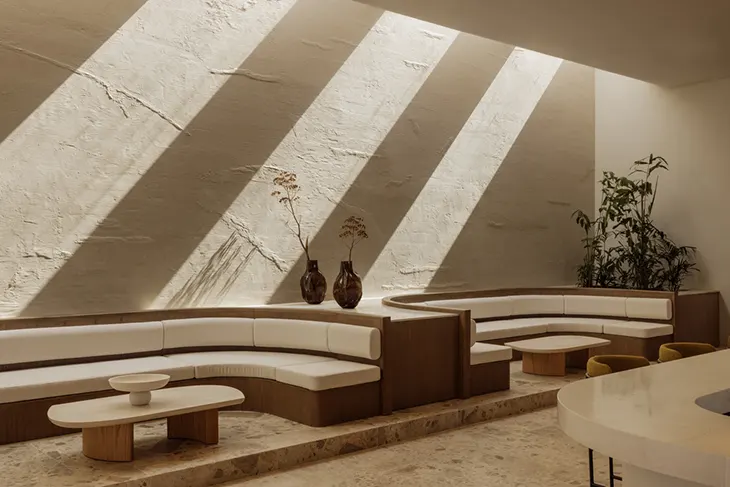
Craft plays a defining role. From terracotta tiling and raw linen to wood, rattan, and earthenware, each interior material echoes its surrounding environment. Stone walls are built from excavated on-site material, while concrete mixes contain local aggregates, anchoring the architecture literally and visually in its setting. This emphasis on provenance ensures the resort feels not placed on the land, but of it.
The project also stands out for its environmental intelligence. Passive strategies, optimal orientation, natural ventilation, and deep overhangs, work alongside active systems including photovoltaic energy production, an on-site well for water sourcing, and green roofs that improve insulation and reduce visual impact. The landscape design uses native, drought-resistant plants to reduce water consumption and support biodiversity, extending the architecture’s sensitivity into the living systems around it.
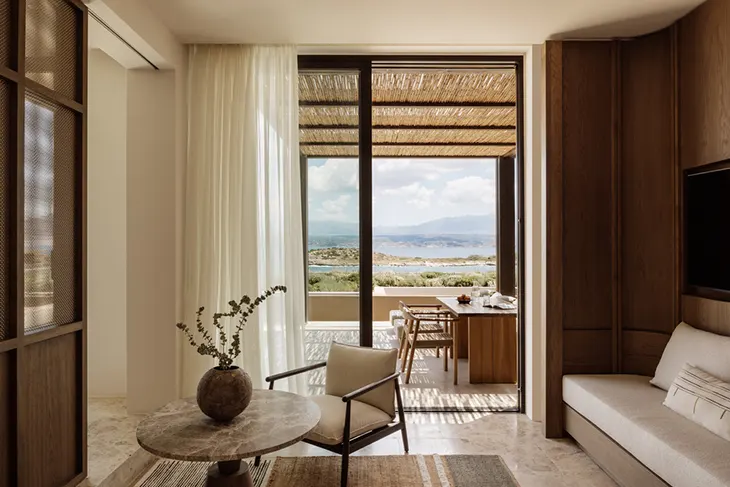
Block722’s vision is quietly radical: restorative hospitality that moves beyond spectacle to embody values of sustainability, slowness, and site-specific beauty. The JW Marriott Crete is not just a hotel, it is a model for how large-scale developments can respect and enhance the character of fragile coastal terrains. Through its fusion of contemporary restraint and ancient wisdom, the project positions raw luxury not as excess, but as reverence.
